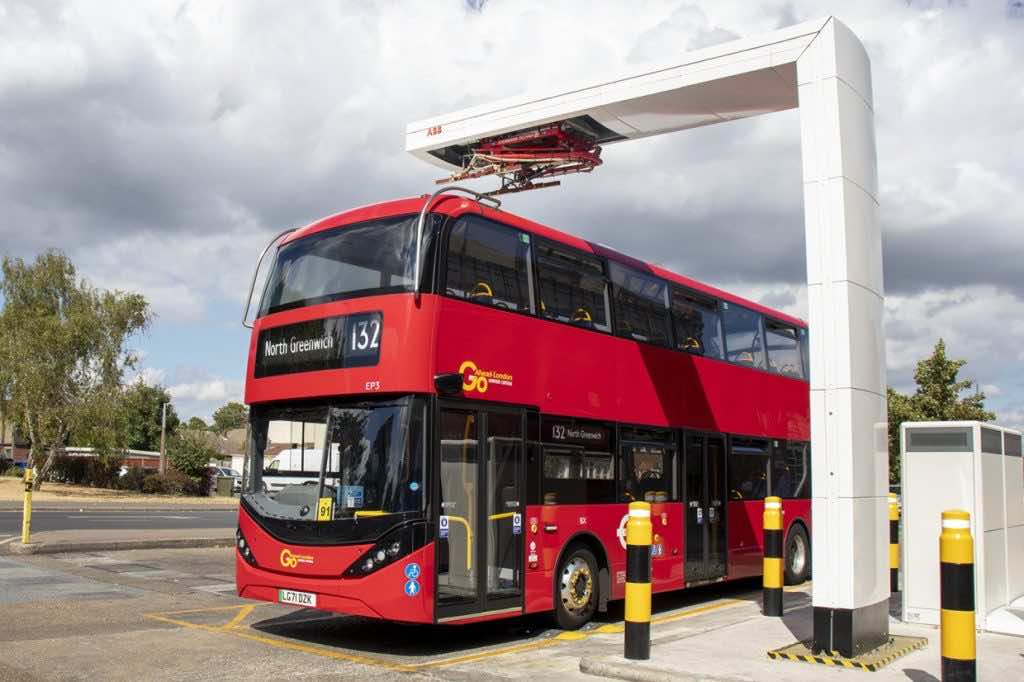In a bid to achieve sustainable development goals, the transport sector of South East London has come up with an intriguing approach in which they introduced the concept of charging buses from their roofs while they are still on track. For this, pantobuses and trambuses have been introduced, which will also help in achieving the goal of zero carbon emissions. It should be noted that both of them have been allocated separate routes. Electric pantobuses have been given route 132 (Bexleyheath-North Greenwich), while route 358 (Crystal Palace-Orpington) has been assigned to trambuses. Not to mention, both of these vehicles have been newly introduced in London.
Talking about the pantobuses, they have an electric bar-shaped apparatus that is attached to the roof of the buses and will be connected to the static pantograph as soon as the bus starts moving on Route 132. This connection will enable the bus to charge wirelessly by means of the pantograph, and at the same time, the bus will move in an efficient way, thereby complying with the goal of achieving zero-carbon emissions. Pantobuses are double-decker buses, and they can travel up to 20 miles on a charge of only 10 minutes. Seb Dance, who is the Deputy Mayor for Transport, said, “The introduction of the pantograph builds on the progress we have already made to run a cleaner and greener bus service.”
On the other hand, the trambuses are primarily designed to run on roads rather than railway tracks and are equipped with pantographs integrated at their two terminals. It should be noted that while running on route 358, they will recharge at their two terminals. In addition to this, these are lightweight buses and are very efficient in promoting sustainable transportation. However, the Transport for London (TfL) aims to achieve zero-carbon emissions through this technology by the end of this decade. Also, it plans to equip London with fully automated zero-emission buses by 2034 or 2030, as per the company.
To that end, Dance added, “Transforming London’s bus fleet is an important part of the mayor’s target of getting London to net zero by 2030, and his aim to build a better London – a fairer, greener and more prosperous city for all.” Louise Cheeseman, who is a director at TfL, stated, “The threats of toxic air, climate change, and congestion are becoming clearer every day, and it’s vital that we find technical solutions that help us run clean, green services that get Londoners where they need to be.”

